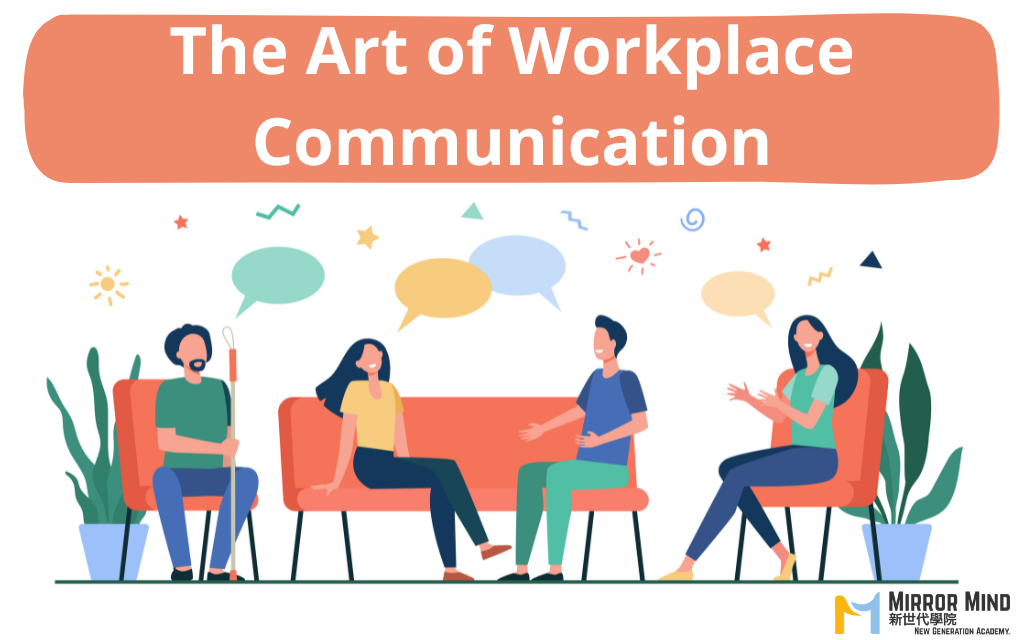The Art of Workplace Communication
- Author: Abby Ho
- Published Date: 2024-05-03 17:37:03
- 146 Views
- Workplace Skills

Workplace communication is a crucial element in the operation of modern enterprises. It not only affects work efficiency, but also profoundly impacts teamwork and employee job satisfaction. Now, I am going to explore the art of workplace communication and provide some practical tips to enhance communication effectiveness.
1. Active Listening
Active Listening involves not only hearing what the other person is saying but also understanding and empathizing with their intentions and emotions. It can build trust and help identify potential problems.
· Focus: Putting down your work and making eye contact with the speaker → avoid distractions and stay focused
· Feedback: Show that you are listening by nodding, giving brief responses, or paraphrasing what the speaker said → show respect and ensure your understanding is correct
· Ask Questions: Ask questions to delve deeper into the speaker's thoughts and needs → help clarify any ambiguous parts
2. Clear Expression
Ambiguous or incomplete information can lead to misunderstandings and even unnecessary conflicts.
· Concise: Keep your messages simple and to the point → help listeners quickly grasp your main points
· Specific: Provide specific details and examples → help the other better understand your meaning
· Positive: Use positive language and a constructive attitude in communication. Even when conveying negative information, maintain a constructive tone
3. Emotional Management
Whether happy, angry, or frustrated, emotions affect our expression and the reception of our messages.
· Self-Awareness: Recognize and understand your emotional state → avoid emotional reactions during communication.
· Stay Calm: Deep breathing or taking a short break → maintain calmness under pressure and respond rationally
4. Non-Verbal Communication
Non-verbal communication includes body language, facial expressions, and tone of voice. These often convey emotions and attitudes more effectively than words alone.
· Eye Contact: Appropriate eye contact shows respect and attention → avoid excessive eye contact to prevent discomfort
· Body Language: Maintain an open posture and friendly gestures → avoid crossing your arms or stepping back, as these actions may be perceived as defensive or unfriendly
· Facial Expressions: Smiling and nodding can convey positive messages → help create a good atmosphere for communication
5. Conflict Resolution
Conflict is inevitable in the workplace, but the key lies in effective resolution. Good communication can turn conflicts into constructive discussions and promote problem-solving.
· Understand Others: Try to view the issue from the other person's perspective to find common ground → reduce antagonistic feelings
· Seek Consensus: Find mutually acceptable solutions by respecting both parties' opinions
· Stay Calm: Focus on solving the problem → avoid emotional reactions or personal attacks
6. Feedback Skills
Effective feedback promotes personal and team growth. However, the manner and timing of feedback are crucial.
· Constructive: Provide specific, actionable suggestions rather than vague criticism → help the other clearly understand how to improve
· Timely: Choose the right time and place to give feedback → avoid public or emotionally charged situations
· Two-Way Communication: Encourage the other person to give you feedback → foster good interaction and mutual improvement
7. Adapt to Different Communication Styles
People in the workplace have different communication styles. Understanding and adapting to these differences can significantly enhance communication effectiveness.
· Understand Differences: Recognize cultural and personality differences among colleagues → adjust your communication style accordingly
· Flexible Response: Choose different communication methods based on the situation and the person. For example, written communication might be more effective for introverted colleagues, while face-to-face interaction may work better for extroverted ones.
Good communication skills not only improve work efficiency but also foster teamwork and create a positive work environment. In practice, we should continually enhance our communication abilities by learning to actively listen, express clearly, manage emotions, effectively use non-verbal communication, resolve conflicts, provide constructive feedback, and adapt to different communication tools and styles.
Why Mirror Mind
Mirror Mind New Generation Academy uses coaching skills and training to help businesses and communities integrate across generations and enhance the competitiveness of local businesses and talents.
Over 2,000 Students
A Large Number of Real Customer Cases
Over 7,000 hours of training
Extensive Industry Training Experience
Across More Than 30 Industries
Provide Training For Different Industries
